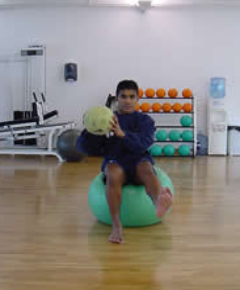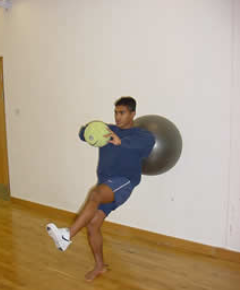What is Proprioception?
Proprioception refers to the body’s ability to sense movement within joints and joint position. This ability enables us to know where our limbs are in space without having to look. It is important in all everyday movements but especially so in complicated sporting movements, where precise coordination is essential. This coordinated movement is a result of the normal functioning of the proprioceptive system.
What is the Proprioceptive System?
The proprioceptive system is made up of receptor nerves that are positioned in the muscles, joints and ligaments around joints. The receptors can sense tension and stretch and pass this information to the brain where it is processed. The brain then responds by signalling to muscles to contract or relax in order to produce the desired movement.
This system is subconscious, and we don’t have to think about the movements or the corrections to movement. Sometimes the reactions take place so fast they are termed reflexive.
Following injury to joints and ligaments the receptors are also damaged, which means the information that is usually sent to the brain is impaired. As a consequence the joint feels odd or just doesn’t feel right.
What are the Benefits?
Once a joint has been damaged, or a ligament has been torn or partially torn, there will be a deficit in the proprioceptive ability of the individual. This can leave the person prone to re-injury, or decrease their coordination during sport. Proprioceptive ability can be trained through specific exercises and, in the case of the injured athlete, the improvement can compensate for the loss caused by injury. This has the effect of decreasing the chances of re-injury. Proprioception also helps speed an athlete’s return to competition following injury. The exercises should be initiated as soon as possible following injury.
Proprioception Exercises
Early proprioception exercise. This allows proprioceptive ability to be trained, whilst only putting partial weight through the affected limb.

Advanced weight bearing proprioceptive exercise, balancing against a gym ball.
Missing Image – Issue uploading
The progression of the previous exercise, with the throwing and catching of a ball whilst balancing against a gym ball.

Full weight bearing proprioception exercise. Balance on a wobble board.
A functional proprioception exercise for soccer. Balancing on one leg while working the ball clockwise on one foot and then anti-clockwise.
Working on joint position sense in non-weight bearing position. The patient is encouraged to try and reproduce the angle of knee bend after straightening the knee.
Working on joint position sense, in a weight bearing position.
Advanced proprioceptive exercise. The patient hops then stops and balances for 20 seconds before hopping on again.

